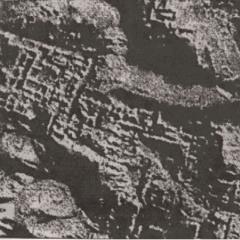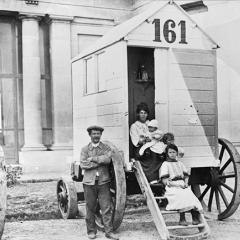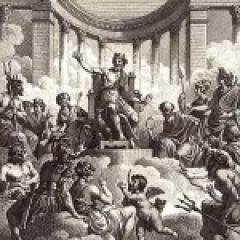Test on the history of Russia on the topic: "Stolypin's reforms." Test test on Russian history. Stolypin agrarian reform Test work on Stolypin reforms
Test on the topic “Stolypin agrarian reform”
1. P.A. Stolypin’s agrarian reform began in
a) 1904
b) 1907
c) 1906
d) 1909
2. Since 1906, P.A. Stolypin held the post
a) Minister of Foreign Affairs
b) Minister of Internal Affairs
c) Minister of Economy
d) Chairman of the Council of Ministers, retaining the post of Minister of Internal Affairs
3. The fundamental act of agrarian reform was
c) Decree on courts-martial
d) Manifesto “On Improving Public Order”
4. The goal of the resettlement policy was
a) reduce population density in the central regions of the country
b) expand the area under cultivation
V) further development communal land use on the outskirts of the country
d) solve the problem of peasants' land shortage
a) on freedom of religion
b) allowed the free exit of peasants from the community
c) about civil equality
d) about improving the living conditions of workers
6. During the agrarian reform, peasant farms left the community
a) 50%
b) about 40%
c) about 25%
d) 70%
7. One of the main directions of agrarian reform was
a) resettlement of peasants beyond the Urals
b) nationalization of land
c) confiscation of landownership
d) preservation of the peasant community
8. Match the last name of a historical figure
and his statement
9. Match the term with its definition
Definition | |
A) artel B) farm B) cut D) reform D) peasant community E) put on G) cooperative H) farmer I) modernization K) nationalization | 1) a plot of land provided by the landowner for the use of peasants for various duties 2) a plot of land allocated to a peasant when he left the community and moved from the village to his own plot 3) the transition of means of production from private ownership to state ownership 4) a peasant entrepreneur who owns or leases land and engages in agriculture on it. 5) improvement in any area of life that does not affect the functional foundations, or a transformation introduced by legislation 6) a production or trade and purchasing organization created for the joint management of several participants or organizations 7) a unit of administrative and economic self-government of peasants of the Russian Empire. 8) association of persons of certain professions for collaboration with participation in common income and general liability 9) change in accordance with the latest, modern requirements and standards 10) a plot of land allocated to a peasant upon leaving the community with the preservation of his yard in the village |
For each position of the first column, select the corresponding position of the second and write it down in the table with the selected numbers under the corresponding letters.
10. Match the date and event
For each position of the first column, select the corresponding position of the second and write it down in the table with the selected numbers under the corresponding letters.
11. Match the direction of the reform with its purpose
Target | |
A) socio-political B) economic B) socio-economic | 1) destroy the community, establish private farms in the form of farms and farmsteads, and send the excess labor to the city, where it will be absorbed by the growing industry; 2) provide lift Agriculture and further industrialization of the country in order to bridge the gap with advanced powers 3) create in the countryside a strong support for the autocracy from strong property owners, splitting them off from the bulk of the peasantry and opposing them to it; strong farms were supposed to become an obstacle to the growth of the revolution in the countryside; |
For each position of the first column, select the corresponding position of the second and write it down in the table with the selected numbers under the corresponding letters.
12. Arrange the time of events in chronological order
A) introduction of courts-martial
B) murder of P.A. Stolypin
C) a decree allowing peasants to leave the community
13. Name the provisions that reflect the goals of the agrarian reform of P.A. Stolypin
2) relieve social tension
3) confiscate landowners' landholdings
4) solve the problem of land shortage among peasants in Central Russia
5) create a social support for the autocracy - peasant owners
6) nationalize the land - transfer it into state ownership
Answer: _________________
14. Select the provisions that are the consequences of the agrarian reform of P.A. Stolypin
1) growth of agricultural production and improvement of land use culture
2) the peasant community was destroyed
3) growth of free labor due to the exit of poor peasants from the community
4) the land became the property of the peasants
5) development of entrepreneurship of the rural bourgeoisie
6) managed to create a wide layer of peasant farmers
Answer: _________________
15. Select provisions that are not related to the agrarian reform of P.A. Stolypin
1) socialization of the means of production in the village
2) resettlement policy
3) confiscation of landownership
4) destruction of the peasant community
5) creation of a peasant bank to support the wealthy peasantry
6) the problem of peasants’ lack of land was completely solved
Answer: _________________
ANSWERS:
1. in
2. g
3. b
4. g
5 B
6 in
7. a
|
Test on the topic “Stolypin agrarian reform” 1. Agrarian reform began in 2. Since 1906 he held the post a) Minister of Foreign Affairs b) Minister of Internal Affairs c) Minister of Economy d) Chairman of the Council of Ministers, retaining the post of Minister of Internal Affairs 3. The fundamental act of agrarian reform was c) Decree on courts-martial d) Manifesto “On Improving Public Order” 4. The goal of the resettlement policy was a) reduce population density in the central regions of the country b) expand the area under cultivation c) further development of communal land use on the outskirts of the country d) solve the problem of peasants' land shortage b) allowed the free exit of peasants from the community c) about civil equality d) about improving the living conditions of workers 6. During the agrarian reform, peasant farms left the community b) about 40% c) about 25% 7. One of the main directions of agrarian reform was a) resettlement of peasants beyond the Urals b) nationalization of land d) preservation of the peasant community 8. Match the last name of a historical figure and his statement 9. Match the term with its definition
For each position of the first column, select the corresponding position of the second and write it down in the table with the selected numbers under the corresponding letters. For each position of the first column, select the corresponding position of the second and write it down in the table with the selected numbers under the corresponding letters. 11. Match the direction of the reform with its purpose For each position of the first column, select the corresponding position of the second and write it down in the table with the selected numbers under the corresponding letters. 13. Name the provisions that reflect the goals of agrarian reform 2) relieve social tension 3) confiscate landowners' landholdings 4) solve the problem of land shortage among peasants in Central Russia 5) create a social support for the autocracy - peasant owners 6) nationalize the land - transfer it into state ownership Answer: _________________ 14. Select the provisions that are the consequences of agrarian reform 1) growth of agricultural production and improvement of land use culture 2) the peasant community was destroyed 3) growth of free labor due to the exit of poor peasants from the community 4) the land became the property of the peasants 5) development of entrepreneurship of the rural bourgeoisie 6) managed to create a wide layer of peasant farmers Answer: _________________ 15. Select provisions not related to agrarian reform 1) socialization of the means of production in the village 2) resettlement policy 3) confiscation of landownership 4) destruction of the peasant community 5) creation of a peasant bank to support the wealthy peasantry 6) the problem of peasants’ lack of land was completely solved Answer: _________________ Stolypin reform Option 1 Motto political course government P.A. Stolypin. a) “Give socialist reforms”; b) “All classes have equal rights”; c) “First calm, then reform.” Reform program P.A. Stolypin: a) was fully implemented; b) was carried out only partially; c) was not carried out. To the provisions of agrarian reform P.A. Stolypin does not include: a) peasants leaving the community; b) replacing communal land use with private land ownership; c) private redistribution of landowners' lands. According to the agrarian reform, the community left a) about 25% of peasant farms; b) 50% of peasant farms; c) 80% of peasant farms. The resettlement policy during the agrarian reform assumed: a) departure of the Russian peasantry to Middle Eastern countries; b) resettlement of peasants from Siberia to the European part of the country; c) resettlement of peasants from the center to the outskirts of the country. The main resettlement areas were: a) Ukraine, Belarus; b) Crimea and Bessarabia; c) Siberia and Far East. The phrase “You need great upheavals, we need a great Russia” belongs to: a) Nicholas II; b) P.A. Stolypin; c) M.V. Rodzianko. Find the odd one out among the results of P.A.’s agrarian reform. Stolypin: a) development of market relations in agriculture; b) active differentiation of the peasantry; c) strengthening the position of landowners in the countryside. The starting impetus for the economic miracle was: a) a series of agrarian reforms; b) a series of political reforms; c) a series of social reforms. Find the redundant one among the reasons for the incompleteness of the Stolypin reform: a) low economic activity of a significant part of the peasantry; b) short time periods; c) strengthening the role of the landlord economy. Screening test on Russian history Stolypin reform Option 2 As necessary condition to carry out their reforms P.A. Stolypin put forward: a) agreement of the opposition parties with the reforms; b) financial support from European countries; c) 20 years of quiet development. Reforms P.A. Stolypin were generally aimed at: a) the development of bourgeois relations in the country; b) recreation of pre-reformation orders; c) development of socialist relations in the country. Find the correct statement: a) the goal of the agrarian reform was to strengthen the community; b) the goal of the agrarian reform was equalization of land use among peasants; c) the goal of the agrarian reform was the creation of individual peasant farms. Match the terms and their definitions: The purpose of resettlement policy is: a) destruction of peasant land shortages without redistribution of landowners' lands; b) the development of communal land ownership on the outskirts of the empire; c) exchange of farming experience. P.A. Stolypin turned out to be a “lonely reformer” because: a) society is tired of constant reforms; b) for the authorities his reforms were radical, but for the people they were insufficient; The main political support in carrying out reforms was/for Stolypin: a) the monarch himself; b) majority in the Duma; c) developed political parties. Find the odd one out among the consequences of the reform: a) accelerating the process of stratification of peasants; b) removing restrictions on the development of capitalism in the countryside; V) economic relations with other states have ceased. Political stabilization that began after the reform: a) reduced the influence of left-wing parties and groups; b) allowed the strike movement to grow; c) increased the number of members of authorized trade unions. The reform contributed to: a) the development of the country along the path of modernization; b) enrichment of only the ruling elite; Sample answers:
Evaluation criteria 10 correct answers – “5”; 7-9 correct answers – “4”; 5.6 correct answers – “3”; less than 5 correct answers – “2”. Topic: Stolypin's reforms Option 1. 1.Agrarian program P.A. Stolypin provided for such measures as: A) the elimination of landowner agriculture; B) widespread development of the cooperative movement; C) free exit of peasants from the community; D) resettlement of peasants beyond the Urals D) prohibition of free purchase and sale of land Answer: V.G A) diverting the attention of peasants from the idea of forced alienation of landowners’ lands; B) turning Russia into a rule of law state; C) the formation of market relations in the agricultural sector 3. P.A. Stolypin’s agrarian reform was aimed at: A) destruction of the communal psychology of the Russian peasantry; B) the formation of a wide layer of small bourgeois owners C) liquidation of large land owners 4. Russian peasants did not want to leave the community: A) due to the lack of state support for individual farms B) the kind of influence of revolutionary propaganda; C) due to existing psychological stereotypes A) he himself was a large landowner; B) in his opinion, this idea contradicted the norms of the rule of law; B) believed that the implementation of this idea would lead to endless redistribution of property. 6. The benefits provided to migrant peasants were: A) exemption from military conscription; B) cash benefit; C) Free provision of equipment; D) the right to duty-free trade on the foreign market Answer: A, B Option 2. 1. During the Stolypin agrarian reform, peasants put forward this form self-organization, such as: A) volost peasant councils; B) All-Russian Peasant Union; B) agricultural cooperatives 2.After the introduction of courts-martial (decree of August 19, 1906), contemporaries began to call the gallows “Stolypin ties.” A) State Duma deputy cadet F.I. Rodichev; B) Bolshevik leader V.I. Lenin B) retired Prime Minister S.Yu. Witte 3. Stolypin’s agrarian reform was supported by the party: A) social revolutionaries; B) "Union of the Russian People" 4. NikolayIIstopped supporting Stolypin because: A) saw in his endeavors a threat to autocratic power; B) was afraid of being in the shadow of the bright figure of the minister; B) was against the destruction of the peasant community; 5. The terrorist act against P.A. Stolypin was committed by: A) E.F.Azef B) D.G. Bogrov B) B.V. Savinkov 6. After the death of Stolypin, the Chairman of the Council of Ministers became: A) I.L. Goremykin B) V.N. Kokovtsev B) B.V. Styumer 7. Indicate which terms correspond to the following definitions: A) a form of organization of production and labor based on group ownership, a form of connections between enterprises engaged in the joint production of certain products; B) a plot of land allocated to a peasant upon leaving the community with the preservation of his yard in the village; C) a plot of land allocated to a peasant when he left the community and moved from the village to his own plot 1) farm 2) cooperation 3) cut Share with friends or save for yourself:
|



